L_Bow
Member
- Messages
- 3
- Location
- Birmingham
Hi everyone,
I have a damp patch under a windowsill in my Victorian end-terrace. Looking outside I can see some gaps in the pebbledash beneath the sill which may explain part of the problem. But I've also noticed that what I had assumed to be a painted solid stone sill actually has some kind of soft white material built up on top, a visible hole on the top surface, and from peering into the gaps, appears to have a lot of empty space inside. There's no sign of a drip edge on the lower surface of the sill. I'm now questioning how the sill is constructed, what a windowsill even is normally, and whether I should consider a more complete restoration of the sill before re-rendering the wall and sealing gaps. Could the white material be there to add a slope for water? Or repair gaps and cracks? What kind of trade would I need to contact to get an old windowsill correctly deflecting water? The sandy dust is from old pebbledash - please ignore!
Many thanks for your input,
Lewis
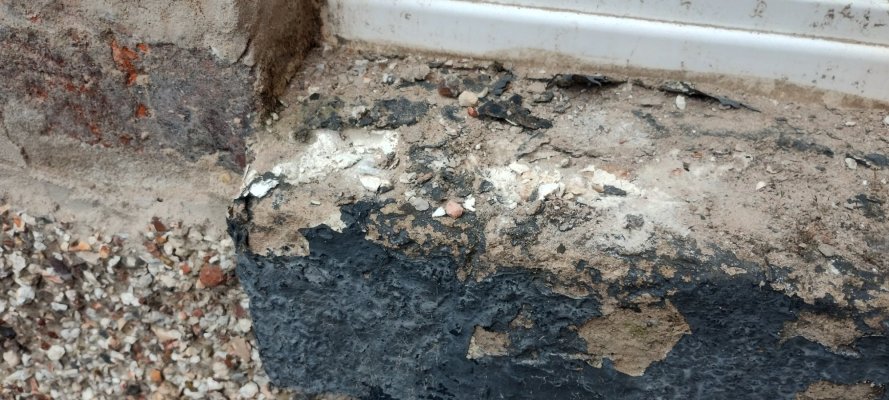
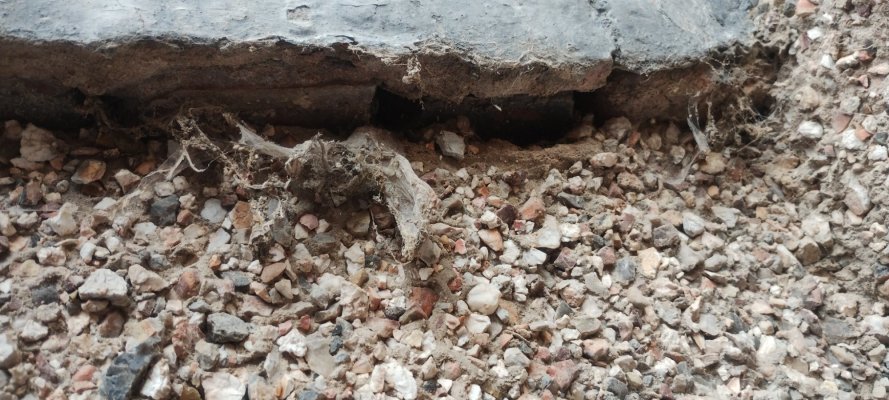
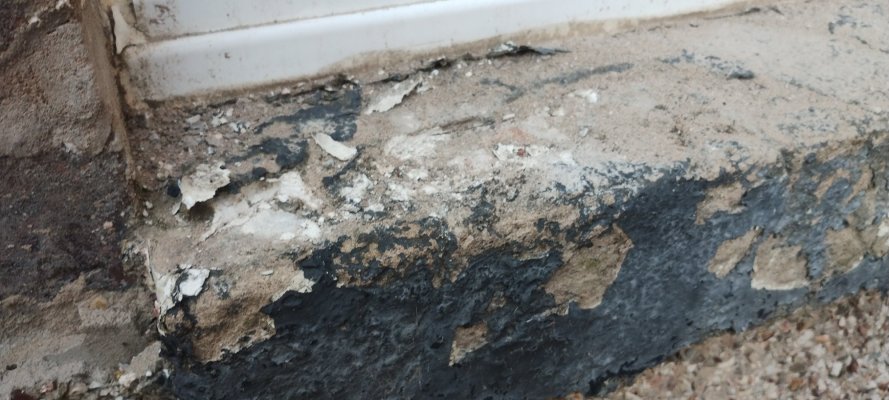
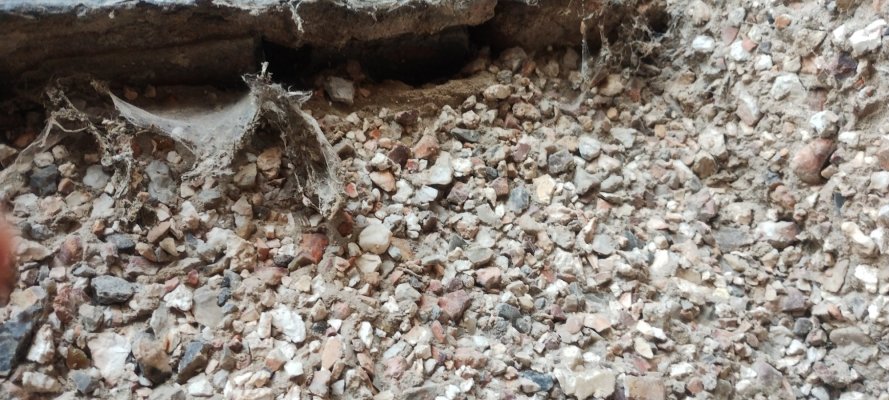
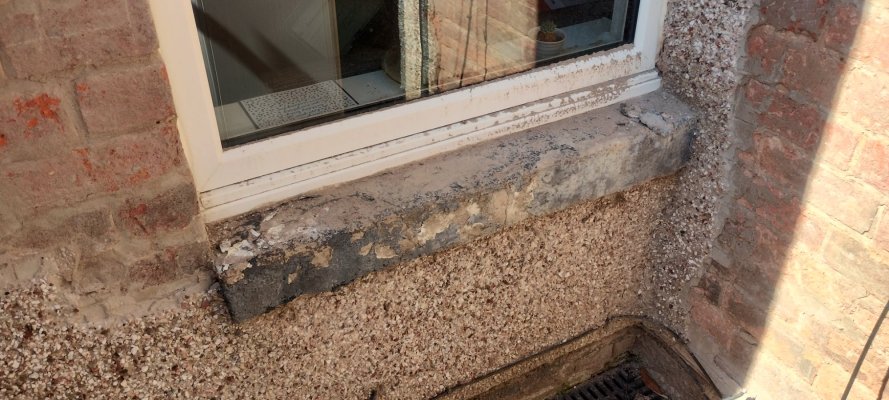
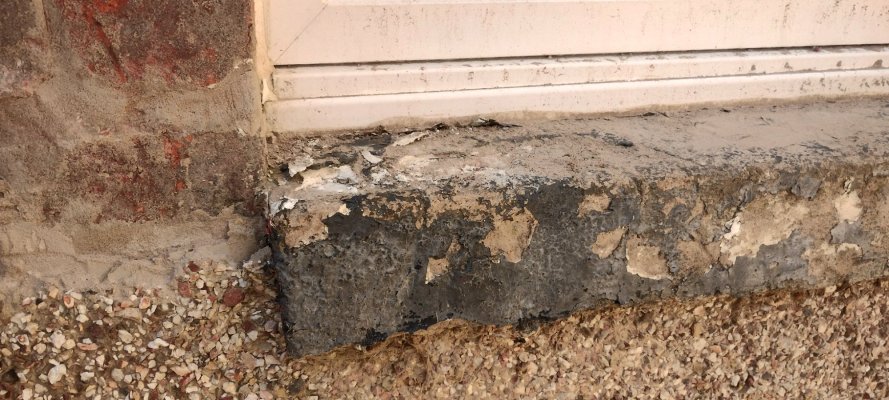
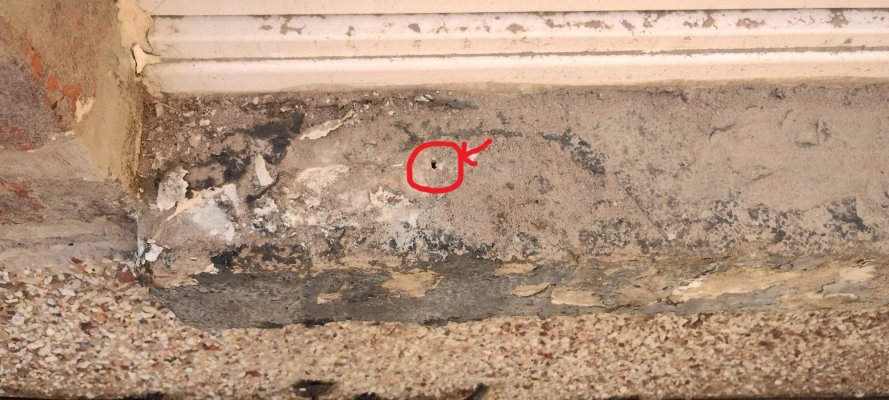
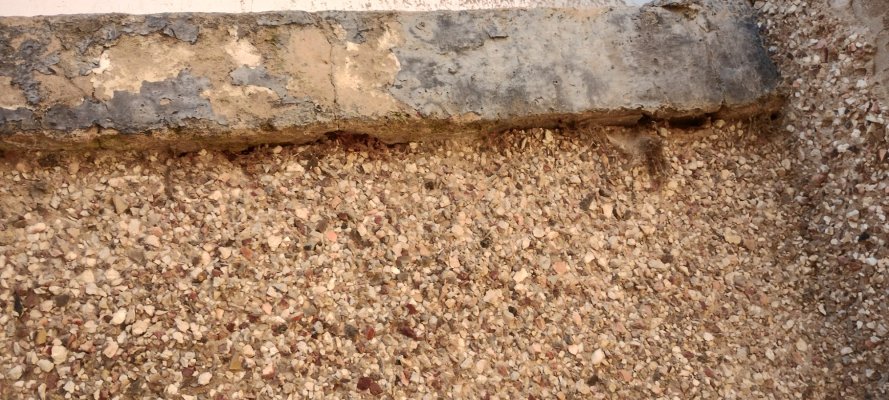
I have a damp patch under a windowsill in my Victorian end-terrace. Looking outside I can see some gaps in the pebbledash beneath the sill which may explain part of the problem. But I've also noticed that what I had assumed to be a painted solid stone sill actually has some kind of soft white material built up on top, a visible hole on the top surface, and from peering into the gaps, appears to have a lot of empty space inside. There's no sign of a drip edge on the lower surface of the sill. I'm now questioning how the sill is constructed, what a windowsill even is normally, and whether I should consider a more complete restoration of the sill before re-rendering the wall and sealing gaps. Could the white material be there to add a slope for water? Or repair gaps and cracks? What kind of trade would I need to contact to get an old windowsill correctly deflecting water? The sandy dust is from old pebbledash - please ignore!
Many thanks for your input,
Lewis








